Back when I first went vegan, and my mother became aware of my growing obsession with hummus, she told me about a dish my grandmother used to make. It was apparently just like hummus, a thick chickpea spread prepared with garlic and lemon. But, after mashing the chickpeas, my grandmother would place them into a mold. When it came time to enjoy the dish, she’d liberate it from the mold, cut it into slices, and drizzle it with olive oil. It was called fava, my mom said, and it was delicious, a hummus lover’s delight.
Last week, I shared a yellow split pea recipe, and this week I found myself with a half pound of yellow split peas begging to be used in some fashion that isn’t soup. I thought back to a dish I’d tried at a Mediterranean restaurant in DC, a yellow split pea hummus that was divine. When I started to research yellow split pea hummus, it turns out that it’s a Greek dip called–you guessed it–fava. The fava my mother remembers was most likely a chickpea version of what is typically a split pea dip recipe in Greece. This “fava” has nothing to do with fava beans: it’s almost always a split pea or lentil base, unless you’re my grandmother and you decide to do things a little differently 🙂
When I was researching fava online, I read that Santorini is famous for its yellow split peas. Who knew? Perhaps my love of pulses has something to do with my Greek heritage.
Much as I want this dish to be a tribute to Greek cooking (and a nod to my family’s culinary traditions), I took some liberties with the recipe. One of them was to spice the dip with sumac, and another was to top it with a sprinkle of za’atar. These spices are typically associated with Middle Eastern, rather than Greek, cuisine. Still, they added a wonderful bright, lemony flavor to the dip, and I stand by them. If you don’t have sumac, you can omit it altogether and simply add a little extra lemon juice or zest to create that bright, citrusy flavor. I was lucky enough to visit Mona’s Cafe and Deli last weekend in New Orleans, where they sell Middle Eastern specialty ingredients in bulk for incredible prices. I now have a lot of za’atar on my hands–which is hardly something to complain about. If you’re ever looking to spice up toast (avocado toast, tomato toast, hummus on toast), za’atar is a delightful way to go.
Speaking of toast, this fava makes a wonderful toast topper. I tried it today with sliced heirloom tomatoes and za’atar on one slice, and cashew cheese and chives on the other. I loved them both.
Making some toast squares is one way that you could turn fava into a crowd-pleasing appetizer. You could also serve it with pita chips, crackers, or veggie slices.
Here’s the recipe.
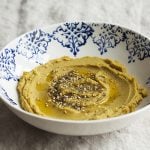
Yellow Split Pea Dip (Fava)
Author -Ingredients
- 2-3 tablespoons olive oil
- 1 white or yellow onion chopped
- 4 cloves garlic minced
- 1/2 pound about 1 1/4 cups dry yellow split peas
- 3 1/2 cups water
- 2 tablespoons lemon juice
- 1/2 teaspoon salt
- 1 teaspoon ground cumin
- 1/2 teaspoon sumac optional
- Dash red pepper flakes optional
- Optional toppings: Za'atar fresh or dried oregano, chopped green onion tops, sun dried tomatoes, olives, lemon zest
Instructions
- Heat a tablespoon of the olive oil in a pot over medium heat. Add the onion. Sautee the onion for 5-7 minutes, or until it's clear and soft. Add the garlic and cook for 2-3 minutes, stirring frequently, or until the garlic is very fragrant.
- Add the split peas and the water to the pot. Bring the water to a boil and reduce to a simmer. Simmer the split peas for 30-35 minutes, or until they're very tender. Most of the water should be absorbed into the split peas, but the mixture should be moist--similar to a thick soup.
- Transfer the whole mixture to a food processor fitted with the S blade and add an additional tablespoon of olive oil, the lemon juice, salt, cumin, sumac, and red pepper flakes, if using. Process until the dip retains some of its texture, but is fairly smooth (you can also continue blending until it's totally smooth, if you prefer a uniform texture that's similar to hummus). Add a few splashes of water or another tablespoon of olive oil if desired, to create a thinner dip.
- Top the dip with a drizzle of olive oil and any toppings of choice. Serve the dip warm, with pita chips, crackers, or veggies. Dip will keep in an airtight container in the fridge for up to four days.
Much as I love hummus, it’s always a joy to experiment with different legumes in creamy, vegan dips and spreads. This one is already a new favorite of mine. And its backstory came into lovely relief this evening, when Steven and I had my mom over for dinner. She tasted the fava, paused thoughtfully for a moment, and broke into a smile. I know it wasn’t the dip she remembers from childhood, but she clearly enjoyed it. And that was the best stamp of approval I could have hoped for.
Enjoy the recipe, all. I had planned on posting a few more dishes this week, but it’s been a busy one, and kitchen time has been scarce. More soon–and in the meantime, I wish you a great start to the weekend.
xo
This post may contain affiliate links. If you use these links to buy something I may earn a commission. Visit my privacy policy to learn more.

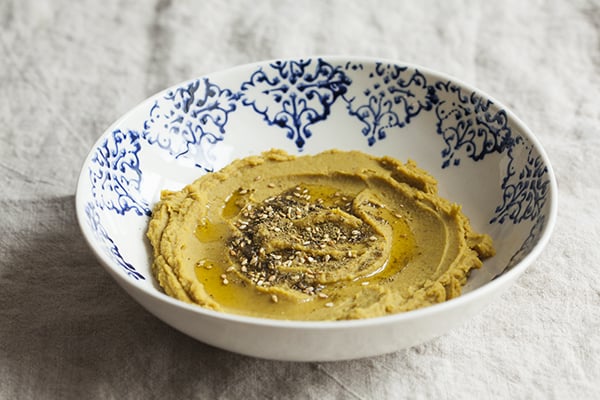
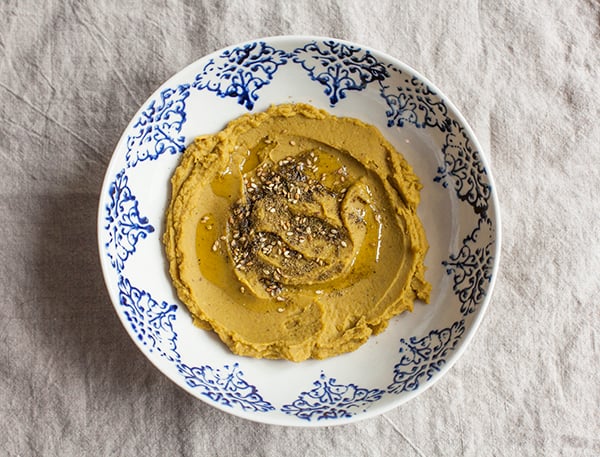
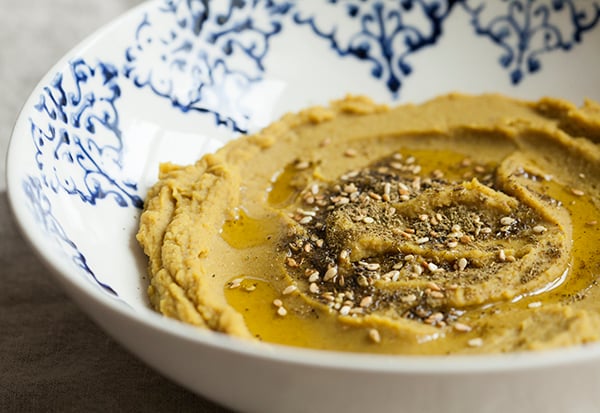
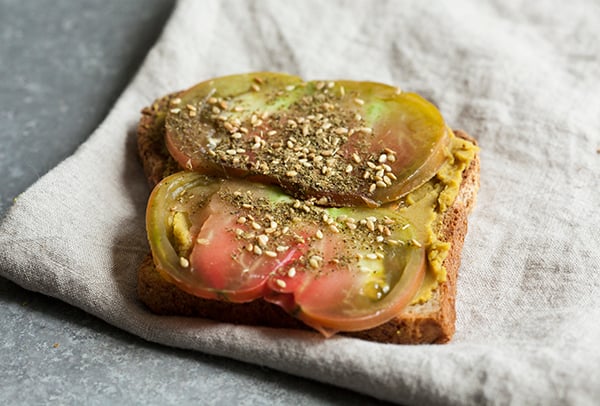
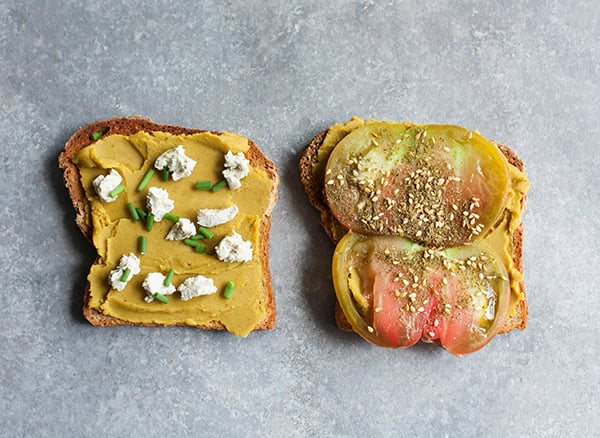
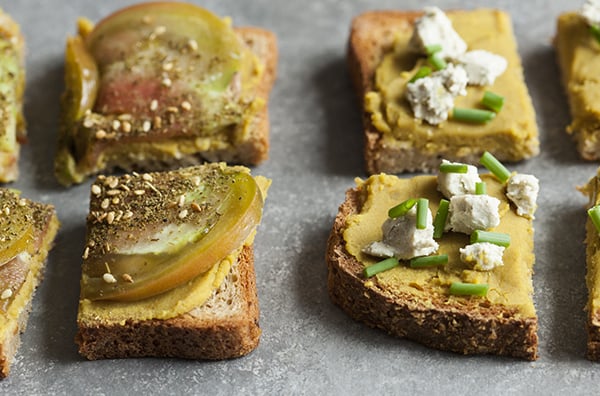
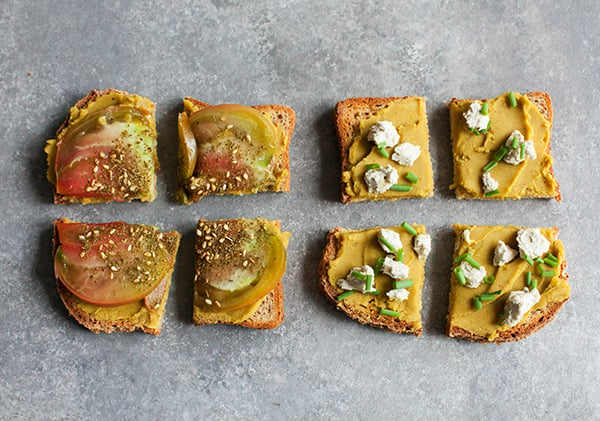
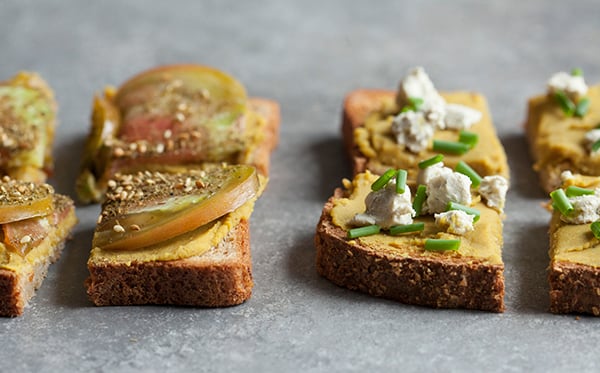
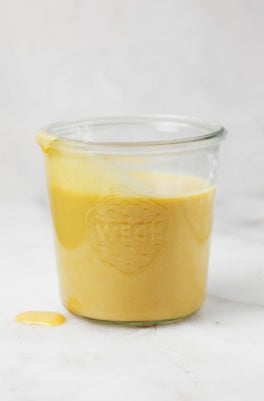
Leave a Comment
I followed the recipe, but still ended up with it being too watery. I ended up squeezing some of the moisture out with cheese cloth to preferred texture. The flavor was great. I will make this again, but with less water. Thanks for sharing this recipe!
Mmmm I want to slather this on sandwich bread and layer it with roasted veggies.
This is such an inventive and creative recipe. We especially love it as an alternative for hummus. Hope to try this dip on some crunchy pita soon!
I’m already imagining a tasty appetizer with fava, I will definitely give this a try. I love the sound of it and the story behind the recipe makes it even more interesting.
This sounds amazing, Gena! I also have an abundance of yellow split peas at the moment (love them), and I’m always looking for new ways to use them. This looks so perfect slathered on toast with fresh veggie toppings. Move over, hummus 😉
I love all this beany and spready, and this looks amazing. Also, the sliced fava your grandma made sounds awesome!! I’ll have to try molding my hummus!
It’s so great to find another way to use split peas! This dip sounds like an excellent instant-lunch staple.
Stunning and delicious! And bean/legume dip and I’m a fan. The perfect topping and spread for just about everything under the sun!
This dip looks lovely, Gena! As much as I love my classic hummus, it’s always nice to mix it up sometimes. Especially when it’s a twist on a beloved family recipe! 🙂
I love dips made with many different pulses:) I expect hummus will always be a favourite, but really, I like them all!
Oh, Gena! Fava is amazing and very popular here in Greece! Especially topped with sliced red onions and sundried tomatoes! I love the Middle Eastern touch you added! I didn’t know you had greek origins!
Congrats on your work! We love your blog!
Kisses from two vegan sisters who blog at http://theveggiesisters.gr/
Lenia, I’m half Greek! My mom is first generation. I’m so happy that you gave me your blog link — can’t wait to check it out. And thank you so much for the comment–this dip is wonderful, and I’m sure I’ll be trying it in a number of ways.
Looks really good, Gena! 🙂
More split peas! Ugh, I think I’m in love.
HI Gena–those little toast squares are the cutest thing ever! They look very tasty and it’s a great way to turn toast into an appetizer. I also love how your love of pulses ends up being tied to your Greek ancestry, and yet you have innovated successfully with a family/traditional recipe, making it your own. Yellow split peas are always the least expensive of the pulses, at least in my experience, so it’s fun to learn an other thing to do with them. Thanks!! xo
Thanks, Maria! It’s a lovely recipe, and I’m scheming up other toppings for next time. I also appreciate the incredible economy of yellow split peas — so inexpensive and versatile. Happy Friday to you 🙂